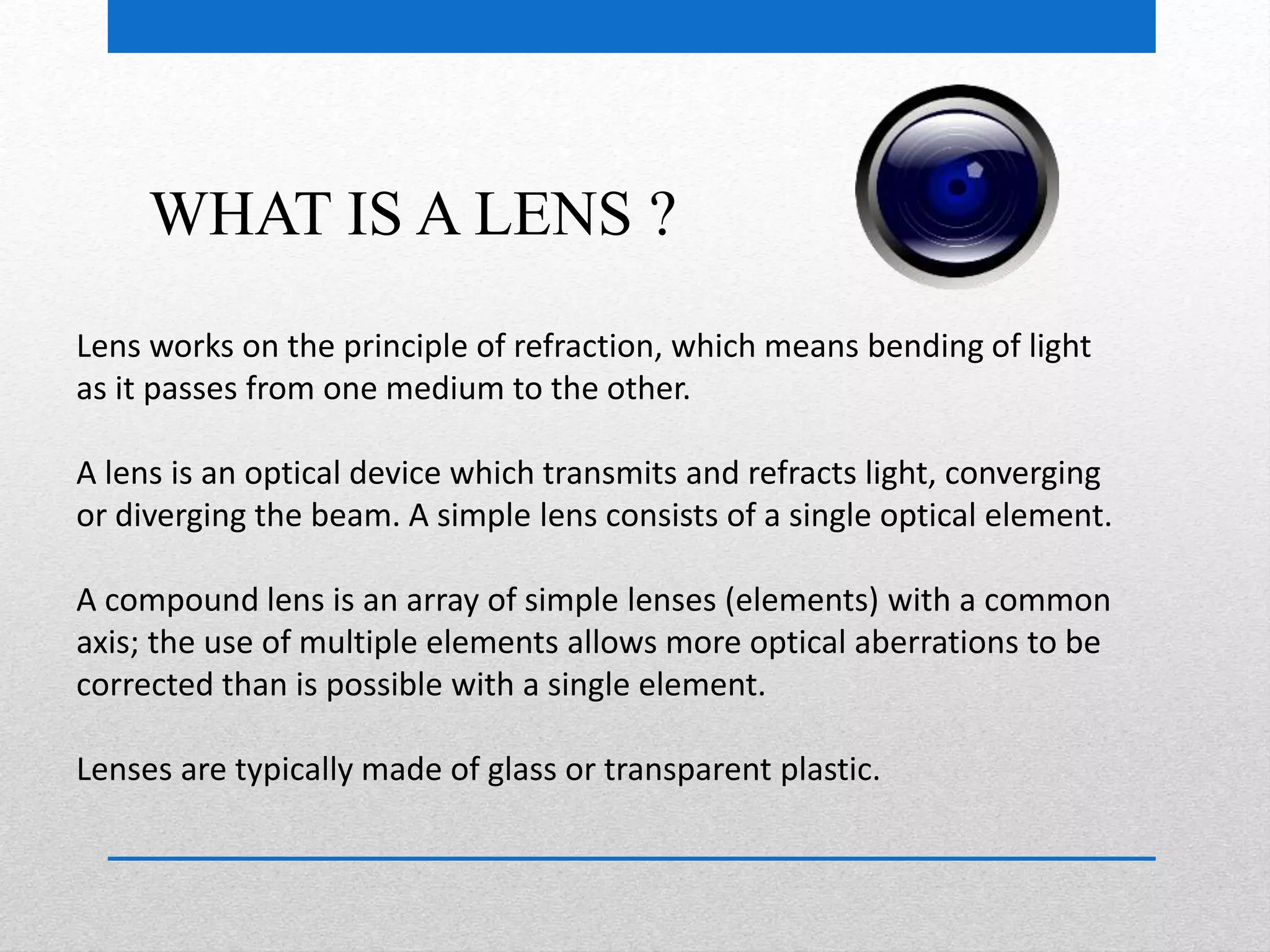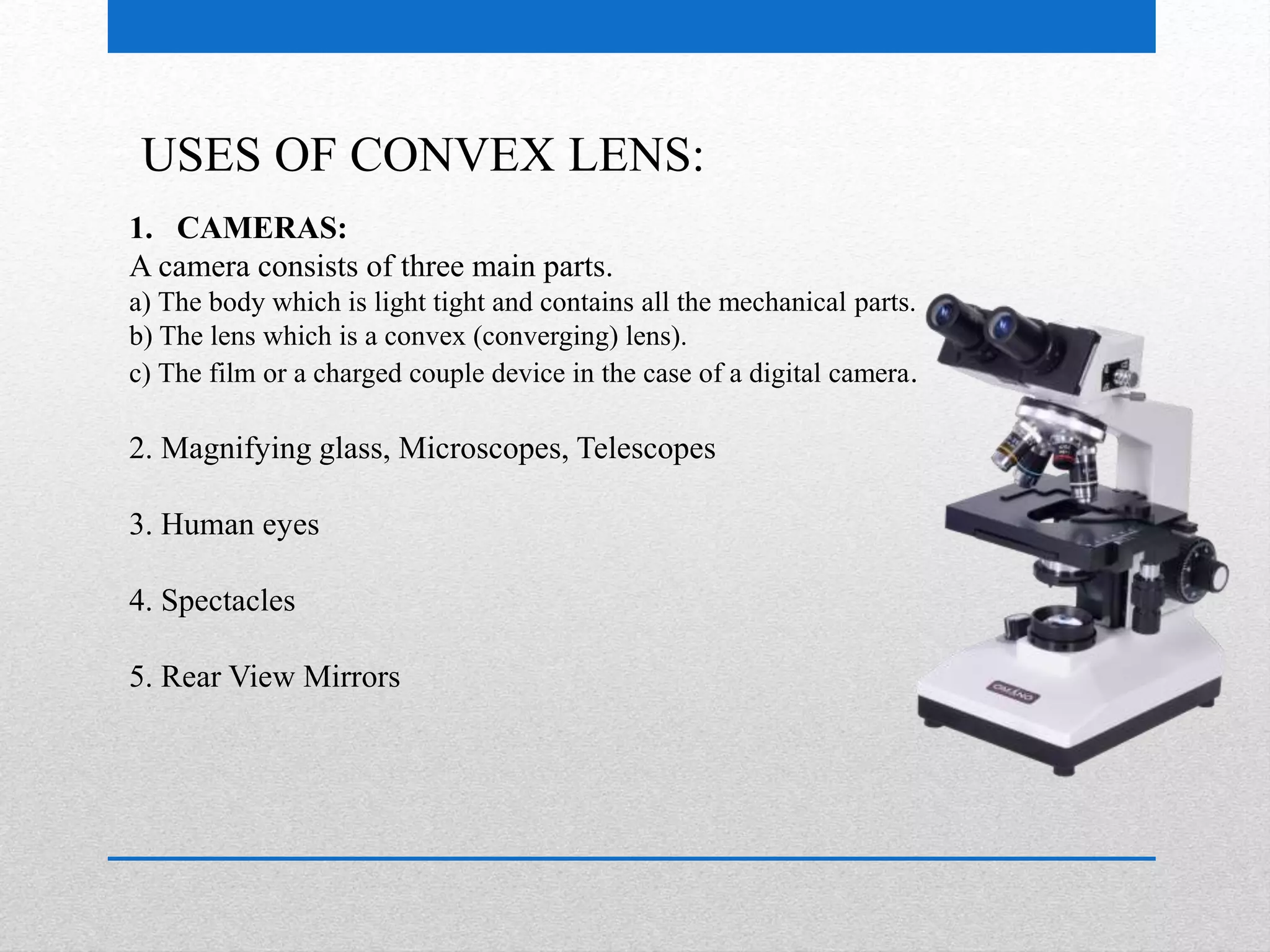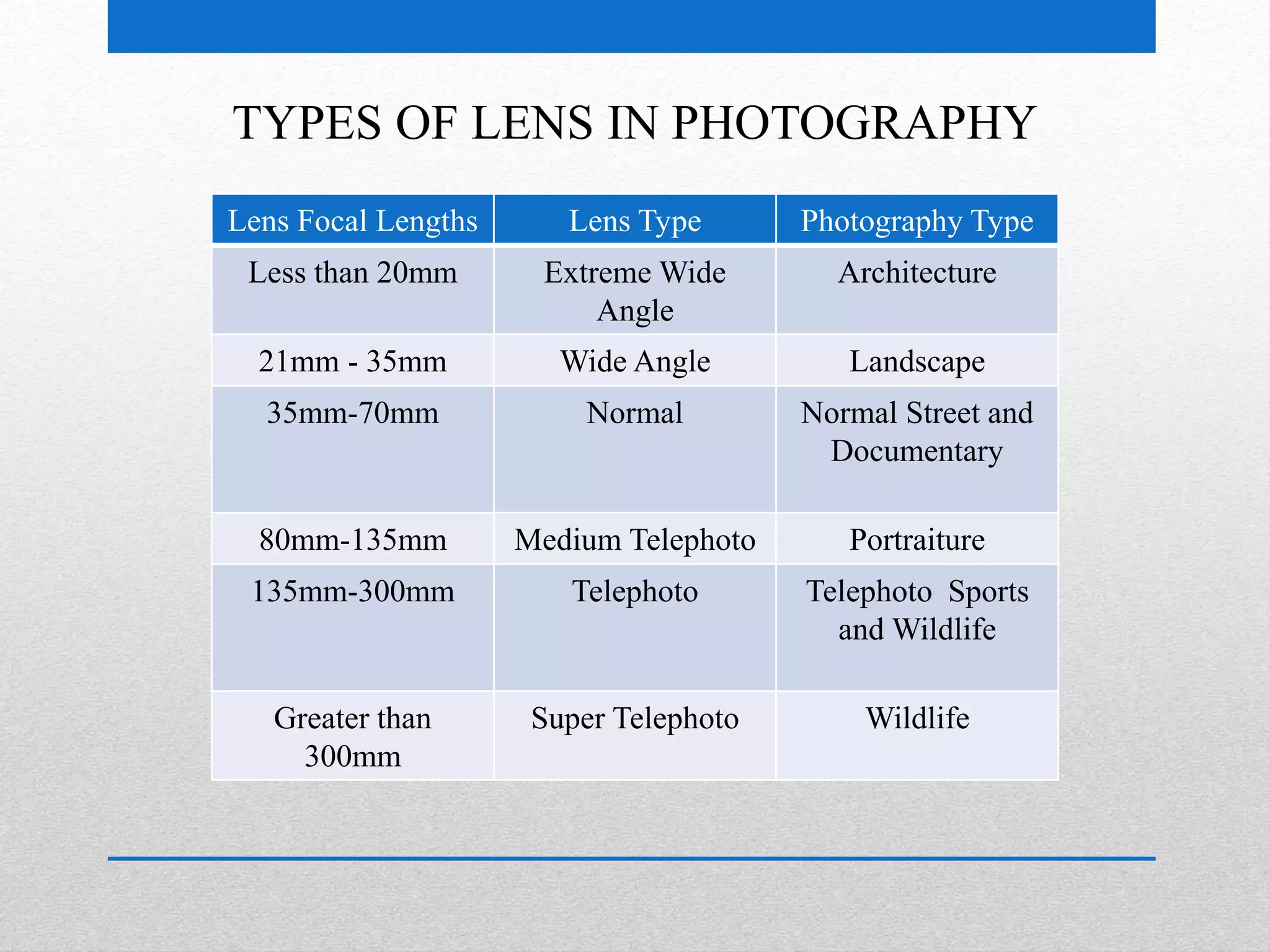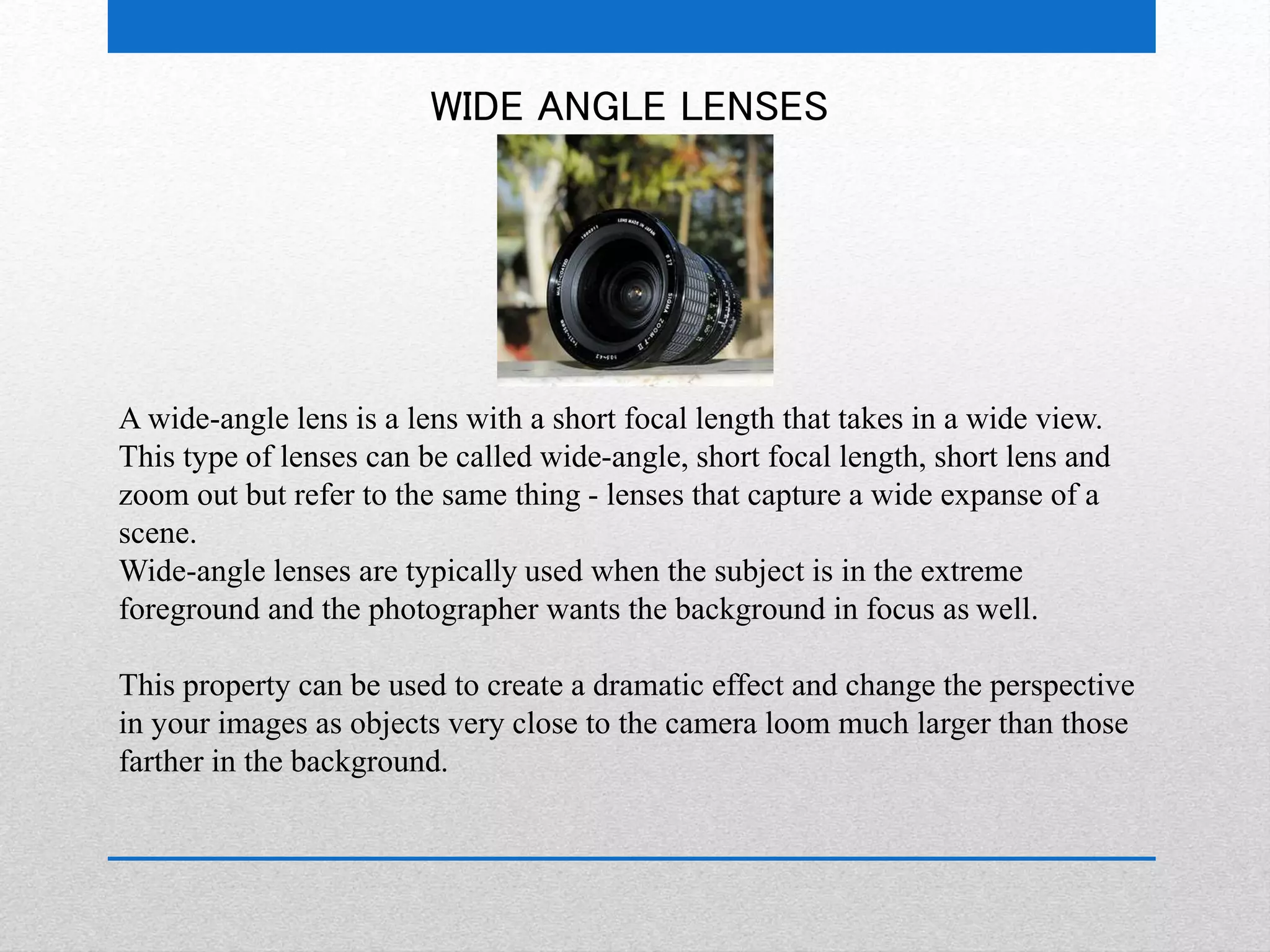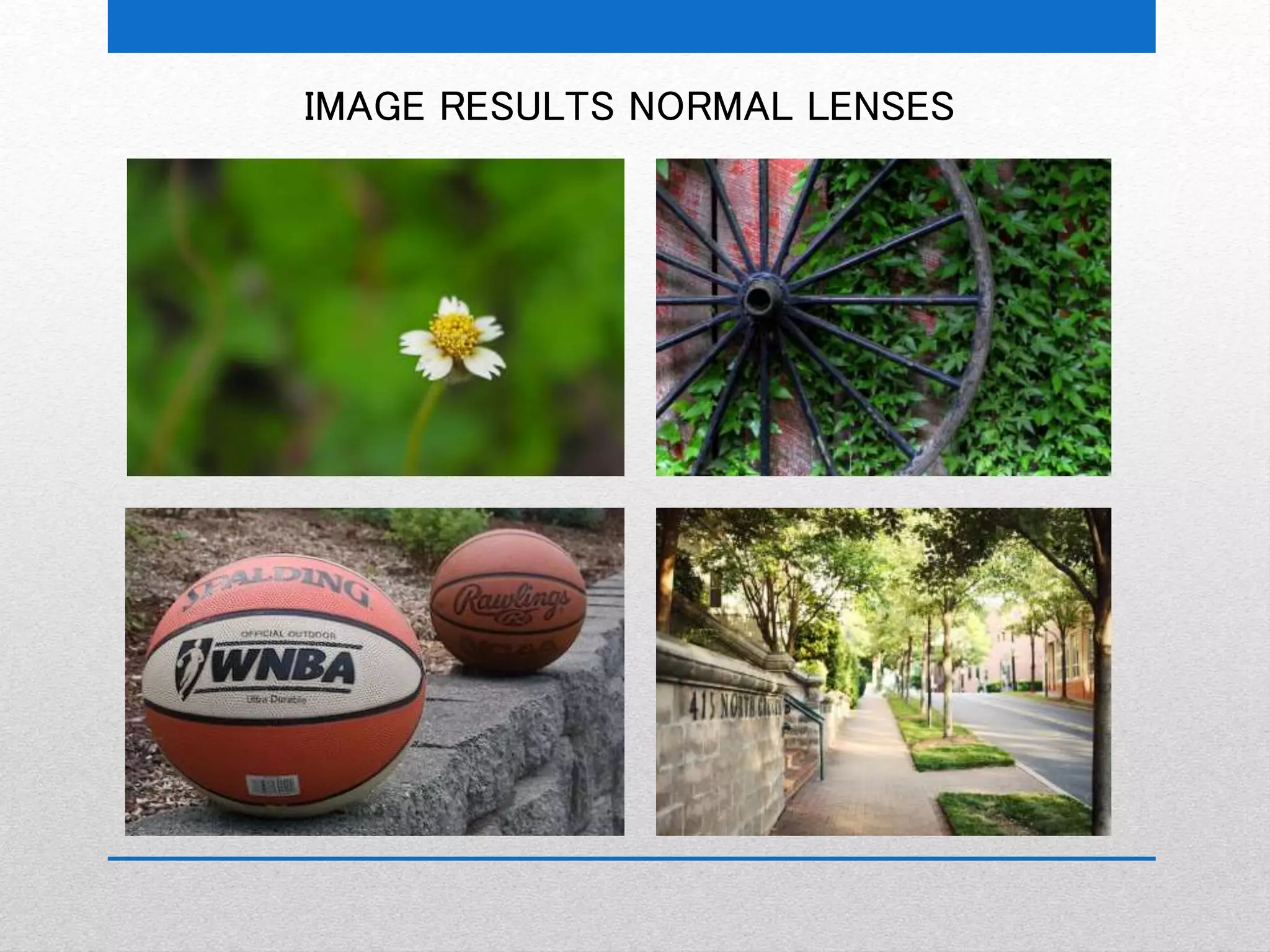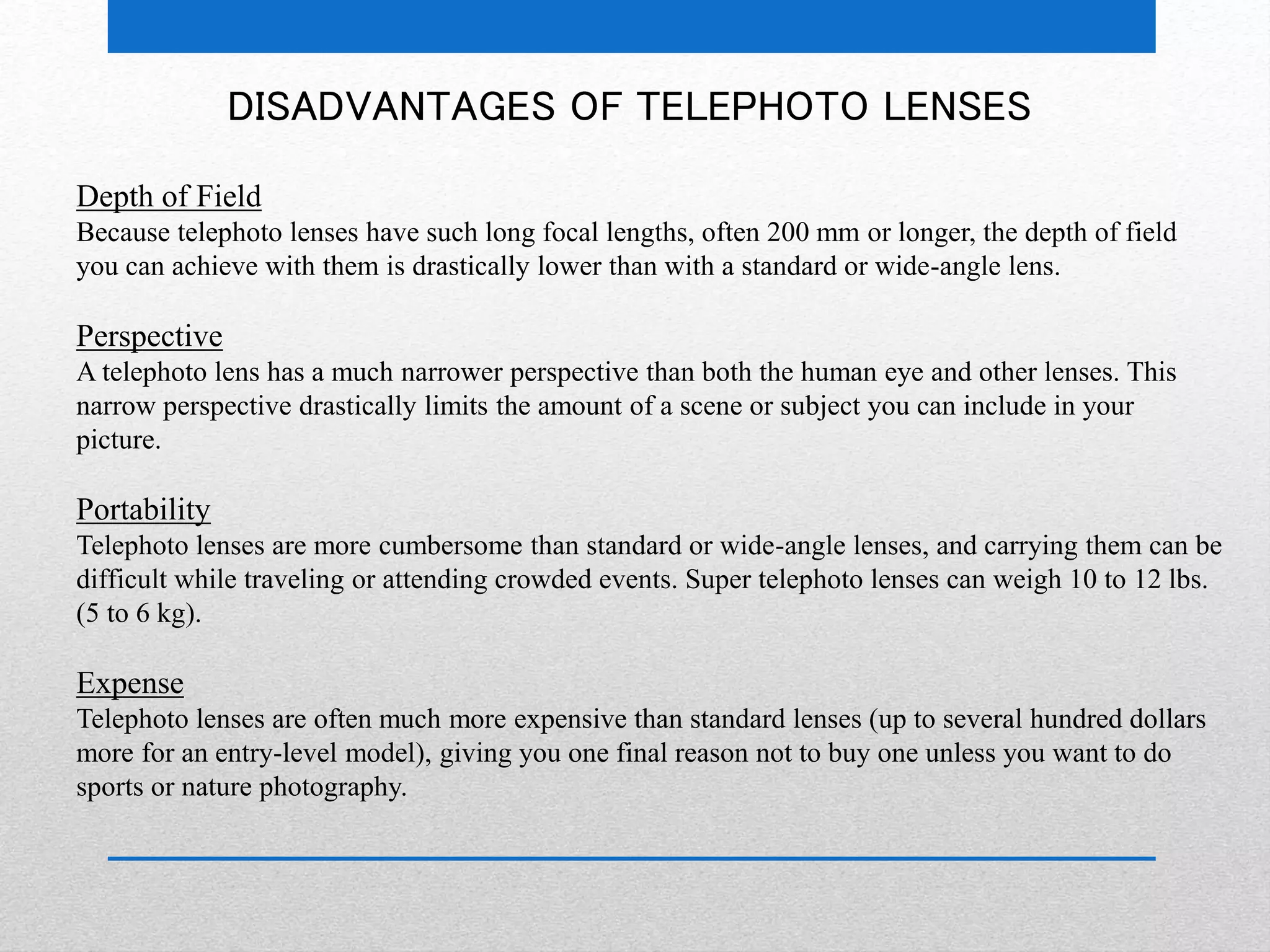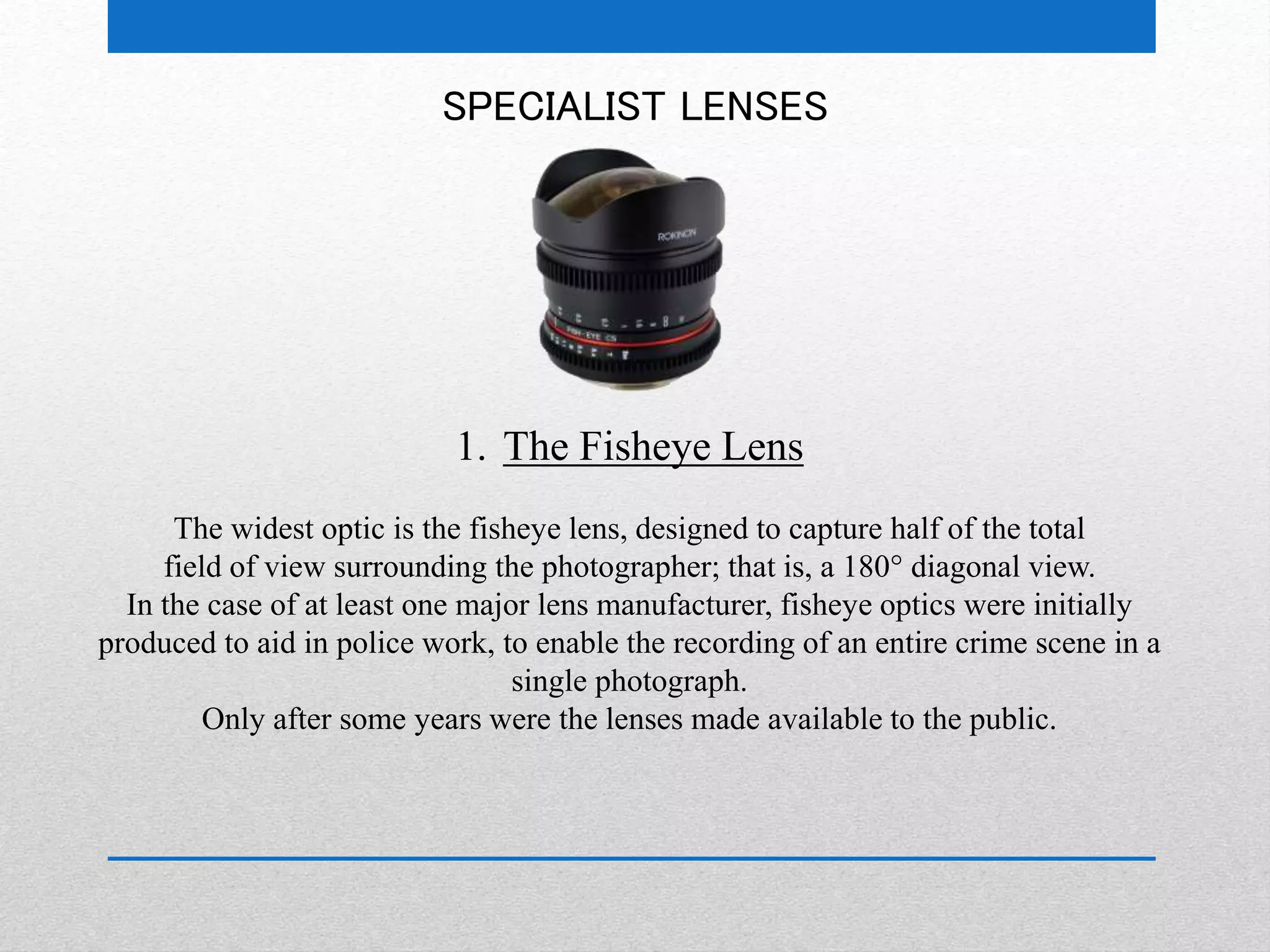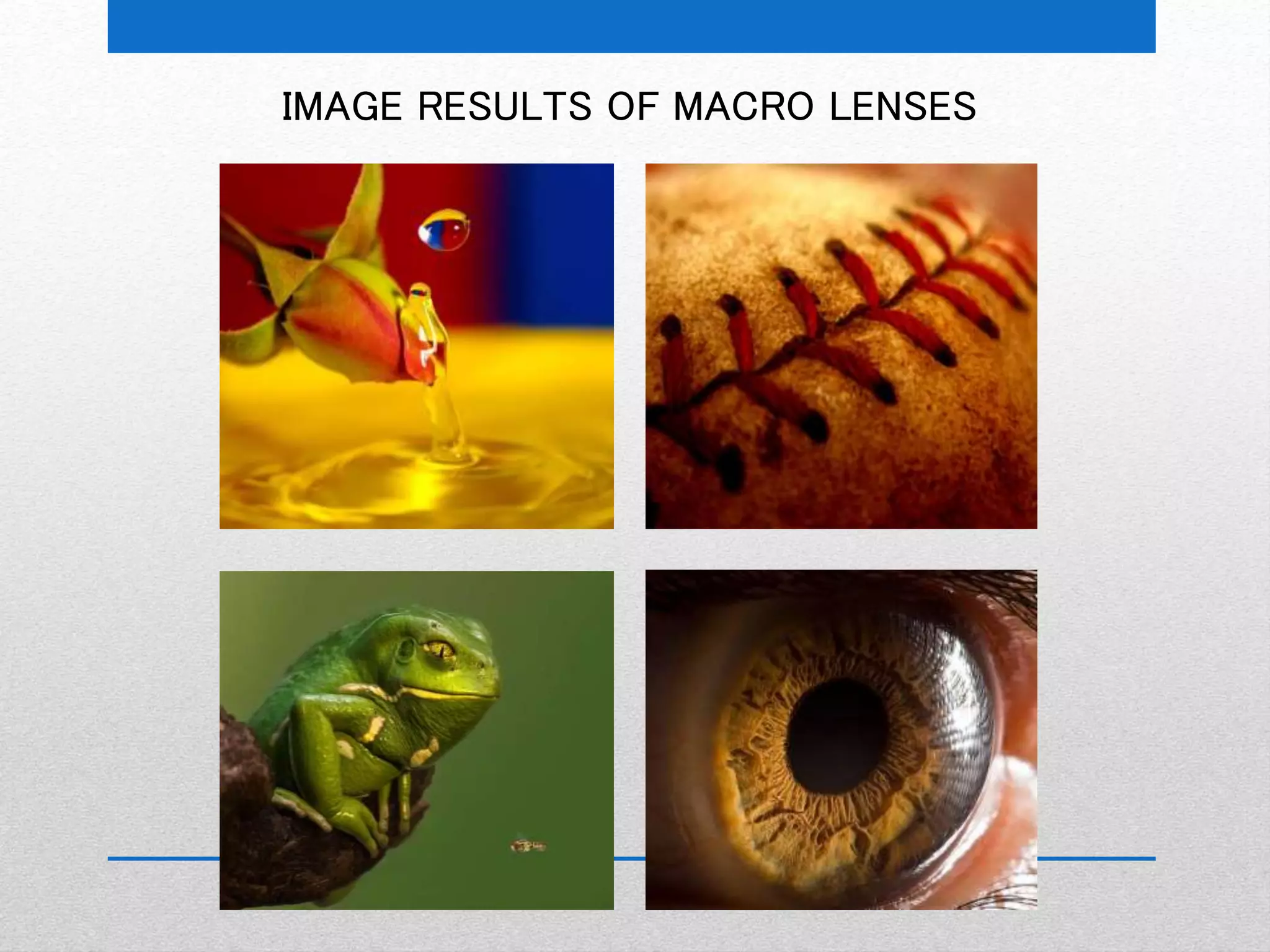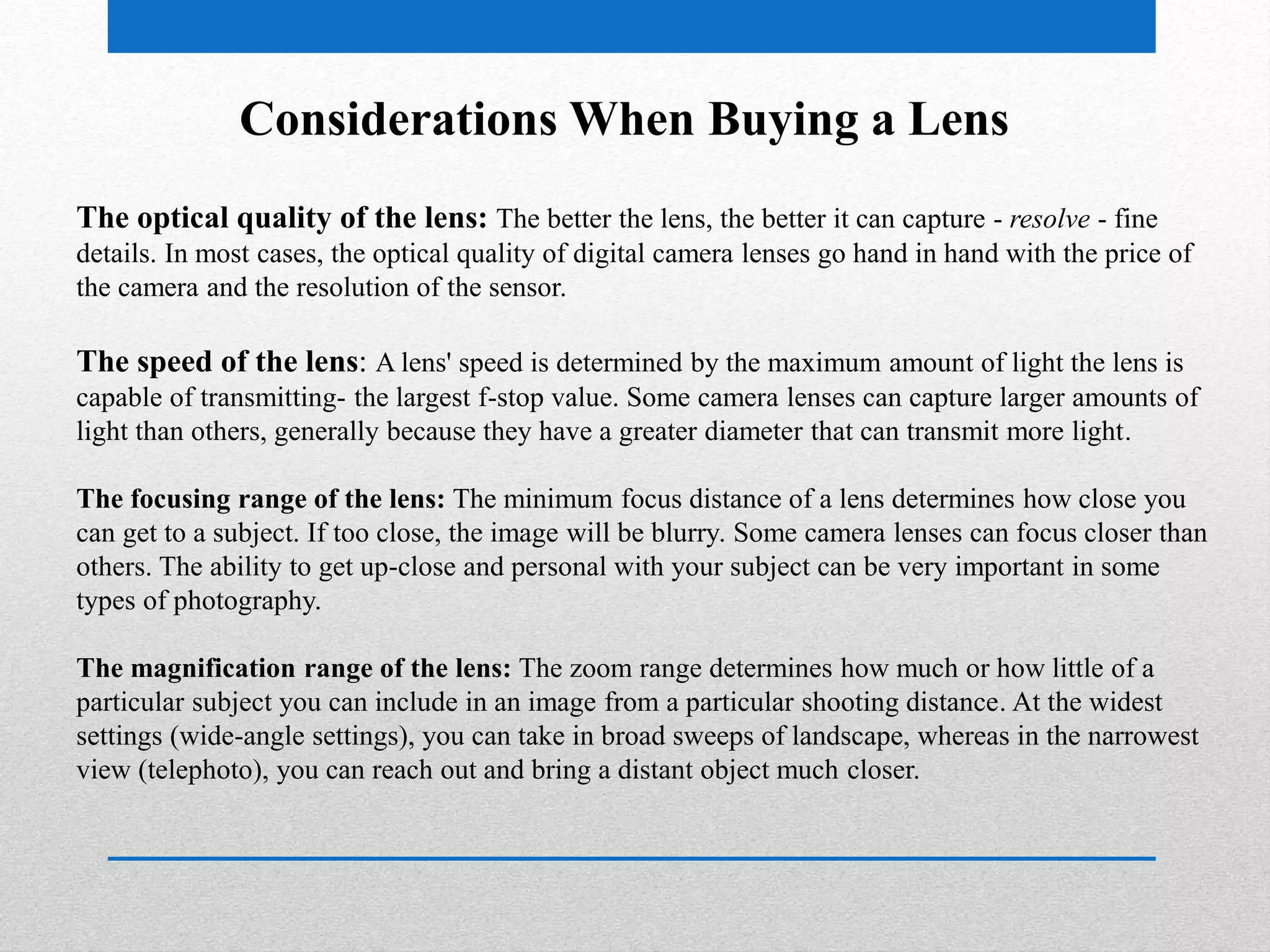The document discusses various types of lenses used in optics, including biconvex and biconcave lenses, their characteristics, and applications in photography and other fields. It also details different focal lengths for photographic lenses, the advantages and disadvantages of each type, and considerations when purchasing and caring for lenses. Additionally, it highlights specialized lenses like fisheye and macro lenses, along with lens accessories and maintenance guidelines.

